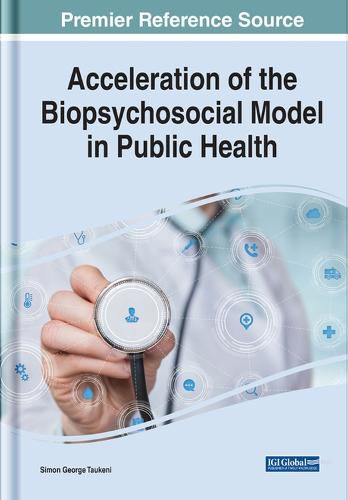Readings Newsletter
Become a Readings Member to make your shopping experience even easier.
Sign in or sign up for free!
You’re not far away from qualifying for FREE standard shipping within Australia
You’ve qualified for FREE standard shipping within Australia
The cart is loading…






This title is printed to order. This book may have been self-published. If so, we cannot guarantee the quality of the content. In the main most books will have gone through the editing process however some may not. We therefore suggest that you be aware of this before ordering this book. If in doubt check either the author or publisher’s details as we are unable to accept any returns unless they are faulty. Please contact us if you have any questions.
It is generally well-established that the biomedical model is informed on the assumption that the occurrence of the disease is the result of biological molecules inside the body. This is seen in the view of the biopsychosocial model that the biomedical model is excluding the importance of psychological, social, economic, environmental, spiritual, and behavioral dimensions of the illness. It is essential to create better awareness to accelerate the use of the biopsychosocial model-focusing on the individual as a whole rather than the illness alone.
Acceleration of the Biopsychosocial Model in Public Health accelerates the inclusion of the biopsychosocial model in the public health sector in order to achieve universal health coverage. It provides a better understanding of the role of various factors, such as psychological, social, emotional, economic, and behavioral, that are responsible for the development of diseases in order to develop comprehensive prevention and intervention measures. Covering topics such as psychological well-being, public health awareness, and system dynamics, this premier reference source is an excellent resource for public health officials, health therapists, health educators, health psychologists, occupational therapists, palliative care providers, community healthcare providers, hospital administrators, health professionals, medical students, medical libraries, researchers, and academicians.
$9.00 standard shipping within Australia
FREE standard shipping within Australia for orders over $100.00
Express & International shipping calculated at checkout
This title is printed to order. This book may have been self-published. If so, we cannot guarantee the quality of the content. In the main most books will have gone through the editing process however some may not. We therefore suggest that you be aware of this before ordering this book. If in doubt check either the author or publisher’s details as we are unable to accept any returns unless they are faulty. Please contact us if you have any questions.
It is generally well-established that the biomedical model is informed on the assumption that the occurrence of the disease is the result of biological molecules inside the body. This is seen in the view of the biopsychosocial model that the biomedical model is excluding the importance of psychological, social, economic, environmental, spiritual, and behavioral dimensions of the illness. It is essential to create better awareness to accelerate the use of the biopsychosocial model-focusing on the individual as a whole rather than the illness alone.
Acceleration of the Biopsychosocial Model in Public Health accelerates the inclusion of the biopsychosocial model in the public health sector in order to achieve universal health coverage. It provides a better understanding of the role of various factors, such as psychological, social, emotional, economic, and behavioral, that are responsible for the development of diseases in order to develop comprehensive prevention and intervention measures. Covering topics such as psychological well-being, public health awareness, and system dynamics, this premier reference source is an excellent resource for public health officials, health therapists, health educators, health psychologists, occupational therapists, palliative care providers, community healthcare providers, hospital administrators, health professionals, medical students, medical libraries, researchers, and academicians.